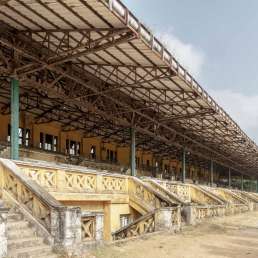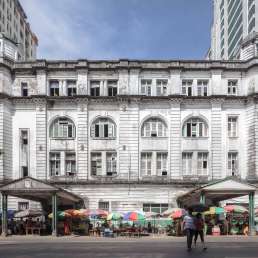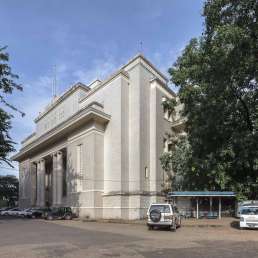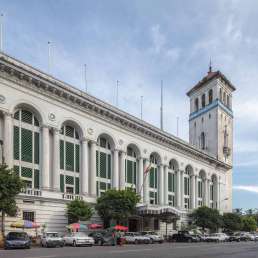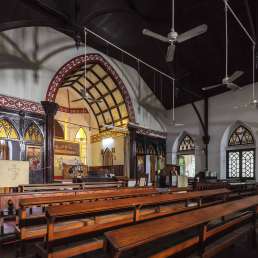Formerly: Bulloch Brothers & Co.
Address: 39-41 Bo Aung Kyaw Street
Year built: 1908
Architect: AC Martin & Co. (contractors)
This red brick structure first housed the office of Bulloch Brothers & Co., the mighty rice trading firm founded by Scotsmen James and George Bulloch. In the shadow of Calcutta’s port, Rangoon became an ever-growing maritime hub for the Bay of Bengal in the mid-19th century. The Bulloch brothers, working as a loose subsidiary of the British India Steam Navigation Company (BI), became the largest rice-milling and -trading operation in the region. Although BI’s relationship with the Bullochs was tense, they could not afford to alienate these powerful local players.
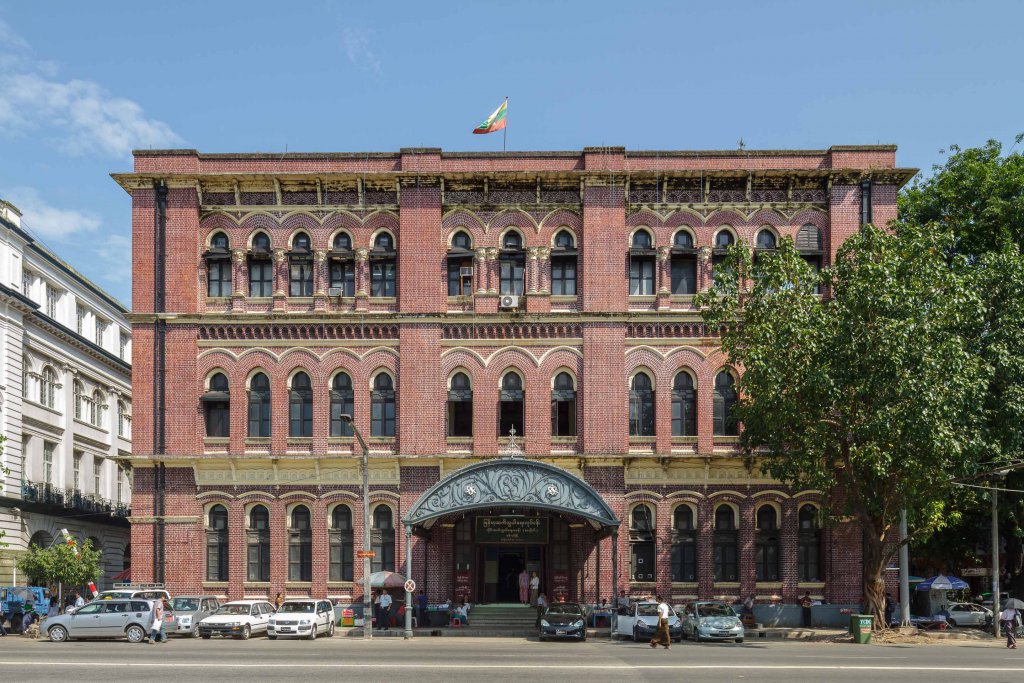
Six decades after its beginnings on the shores of Sittwe (today the capital of Rakhine State, on Myanmar’s western coast) in 1840, Bulloch Brothers & Co. commissioned this spacious and elegant building along Strand Road. The design and cream colour of the Lancet-arched windows and ornate stuccowork give the building its distinctive feel. The front, southern side of the building recently enjoyed a fresh lick of paint, with the mortar gaps accentuated with white coating (unlike the other sides). The stunning beaux-arts iron portico is one of the last, if not the last, of its kind in Yangon.
Bulloch Brothers & Co. was liquidated in 1933 (although some records show the company trading in some form until the outbreak of the Second World War). At around the same time, the General Post Office suffered terrible damage in the 1930 earthquake. It was a graceful, if delicate, filigreed building with nods to Buddhist architecture. The global ripples of the Great Depression meant plans for a new and improved version were set aside. The Bulloch Brothers building was acquired and repurposed instead.
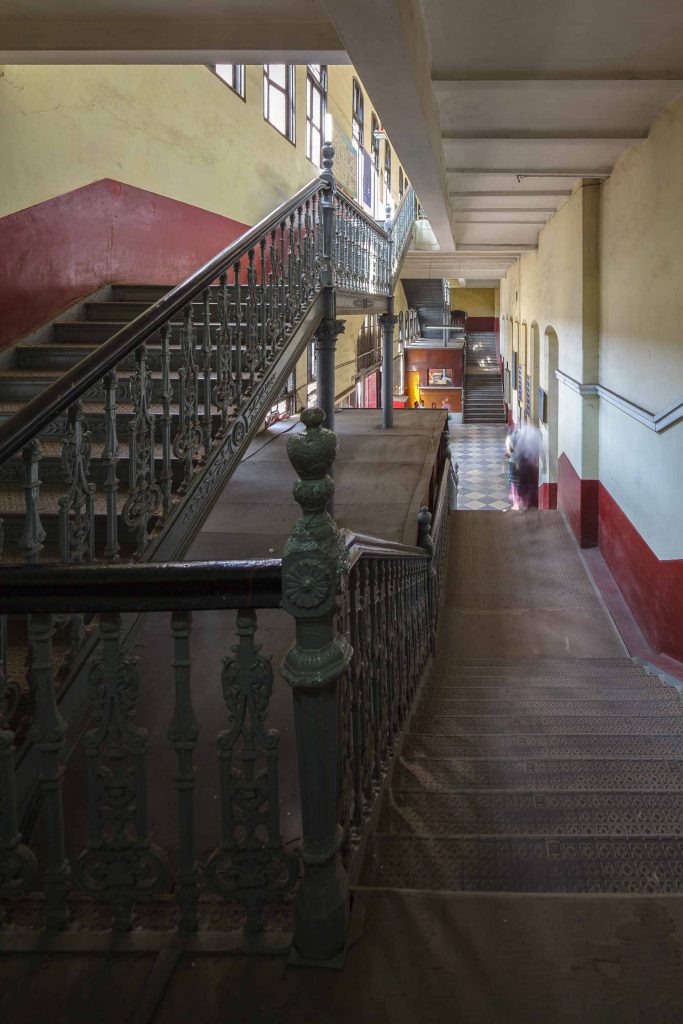
Anyone can venture into the General Post Office today and walk around. The railings of the double-winged stairways are beautifully ornate. The wooden stairs appear to be the original ones, judging by their pattern of wear and the way they creak under your step. The interior mixes some clearly original wooden counters with some new office space made of plastic and steel.
At around the time the building became the new General Post Office, a young man named Shu Maung failed his medical exams and began work here as a postal clerk. He was also active in the nationalist struggle and, the story goes, used his job to intercept British letters of strategic relevance. When he rose to become a founding cadre of the Burmese Independence Army, he chose a nom de guerre—Ne Win—that would echo through the ages.
